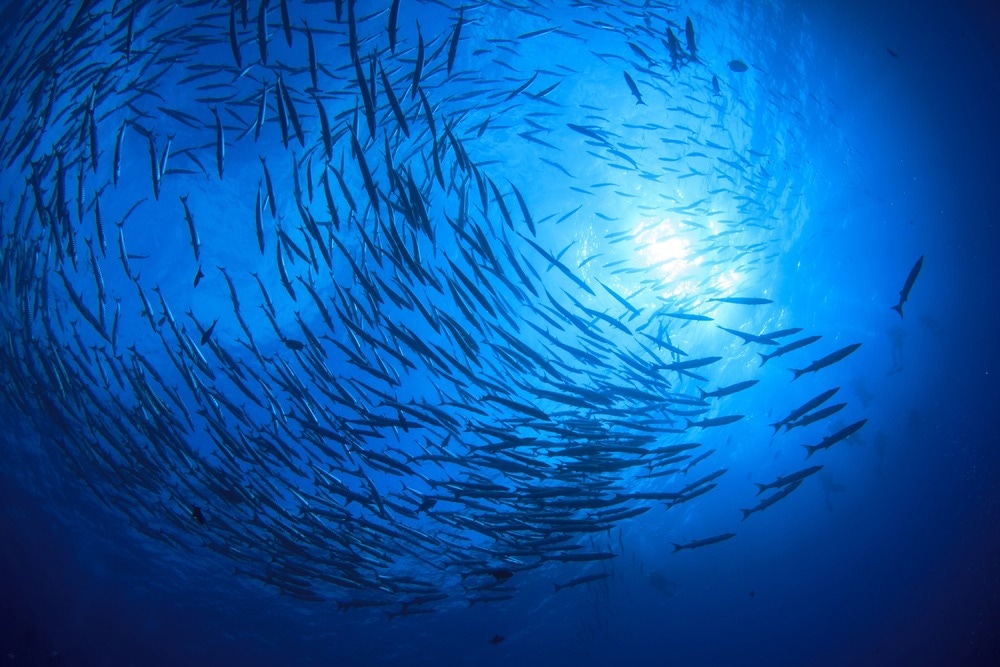Under the guidance of the University of Bristol, researchers have been studying a fish sensory organ to comprehend cues for collective behavior that can be used on underwater robots.

Image Credit: Rich Carey/Shutterstock.com
This work focused on the lateral line sensing organ in African cichlid fish, but found in nearly all fish species, allowing them to sense and decipher water pressures near them with sufficient acuity to detect external impacts like neighboring fish, changes in water flow, obstacles, and predators.
Overall, the lateral line system has been distributed over the trunk, head, and tail of the fish. It is made of mechanoreceptors (neuromasts) that are either on the surface of the skin or within subdermal channels.
We were attempting to find out if the different areas of the lateral line—the lateral line on the head versus the lateral line on the body, or the different types of lateral line sensory units such as those on the skin, versus those under it, play different roles in how the fish is able to sense its environment through environmental pressure readings. We did this in a novel way, by using hybrid fish, that allowed for the natural generation of variation.
Elliott Scott, Study Lead Author, Department of Engineering Mathematics, University of Bristol
They found that the lateral line system present around the head has the most significant impact on how well fish are able to swim in a shoal—at the same time, the existence of more lateral line sensory units, neuromasts, found under the skin lead to fish swimming closer to each other, while a greater existence of neuromasts on the skin leads to in fish swimming more apart.
In a simulation, the scientists could display how the mechanisms underlying the lateral line are relevant not only at the tiny scales found in actual fish but also at larger scales. This could excite a new kind of easily developed pressure sensor for underwater robotics, especially swarm robotics, where price is a significant factor.
These findings provide a better understanding of how the lateral line informs shoaling behavior in fish, while also contributing a novel design of inexpensive pressure sensor that could be useful on underwater robots that have to navigate in dark or murky environments.
Elliott Scott, Study Lead Author, Department of Engineering Mathematics, University of Bristol
The researchers are planning to come up with a sensor in the future to incorporate into a robotic platform to assist a robot in navigating underwater and further illustrate its effectiveness.
This study was financially supported by the Engineering and Physical Sciences Research Council (EPSRC), Biotechnology and Biological Sciences Research Council (BBSRC), and the Human Frontier Science Program (HFSP).
Journal Reference
Scott, E., et al. (2023) Lateral line morphology, sensory perception and collective behavior in African cichlid fish. Royal Society Open Science. doi.org/10.1098/rsos.221478.